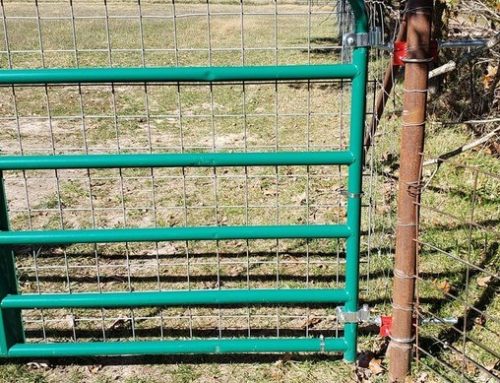Whether you’re just learning the basics of fencing or have quite an experience in this task, there will always be a chance you encounter some cattle fencing mistakes. This is why we’re going to be sharing the most common cattle fencing mistakes. With these, you will be able to up your livestock fencing game tenfold.

The Most Common Cattle Fencing Mistakes
1. Corner Posts Aren’t Deep Enough or Undersized
Whether you have woven, high-tensile, or barbed fencing, installing undersized fences is the biggest mistake when it comes to cattle fencing. Particularly in farms where the soil is soft or sandy, corner posts or undersized posts may not have been set deep enough.
In order to fix this issue, we recommend the use of a 10ft brace while favoring the ‘floating’ diagonal system of bracing. Here, the dimensions of the brace should be 4” by 10”, which is notched half an inch into the fence’s main corner post.
2. The Spacing of the Post Is Too Close
Did you know that there is actually such a thing as too many posts? This will probably be relatable among fencers who use barbed wire fences and the general rule of thumb here is to add a post at every 16.5ft of rod length.
In an electric fencing system, we would recommend using spacing of fence posts that at anywhere between 80 and 100ft apart. This may also mean that there are approximately 50 posts per mile.
3. Using Energizers That Are Wrongly Sized
No matter how many strands of wire have been used in your cattle fence, we recommend using 1 joule of output per fence mile. That being said, we would also recommend using energizers that have low-impedances and low-amps.
4. Ground Rods Set Too Close Together
Grounding should signify 99% of electrical fences, and we recommend 3ft of ground rods per every joule of the output from energizers. Spacing is the key here because ground rods are essentially antennae that receive electrons back and forth from the energizer in order to complete the circuit.
5. Avoid Moose-Proofing – Make Your Fences Wildlife Friendly
Why not replace your elk and/or moose proof fence with flexible fences or low-profile fences? For example, if you employ a top wire at about 30’ and the second wire at about 20’, then an antelope can easily make a dead run under the wires. Elks, on the other hand ,will find that the fence is low enough to hit with their legs.
While these five mistakes are the most common, there are so many more cattle fencing mistakes that the pros and beginners alike can encounter. The only way you can avoid these is to learn from our research and experience and then translate these into your practices.
Happy grazing fellow fencers!



